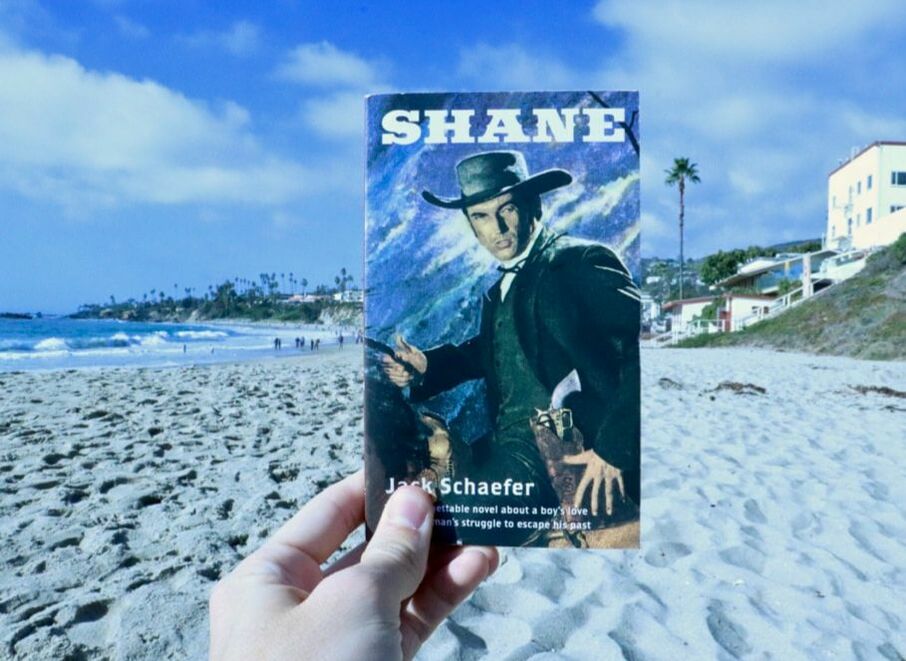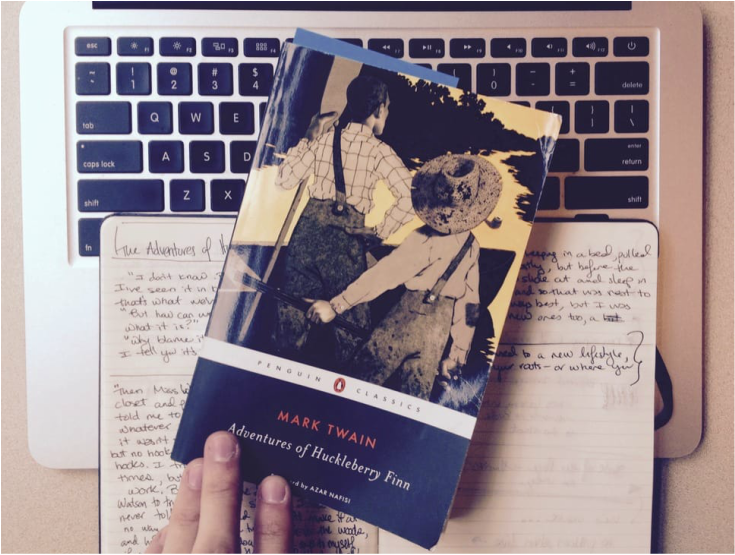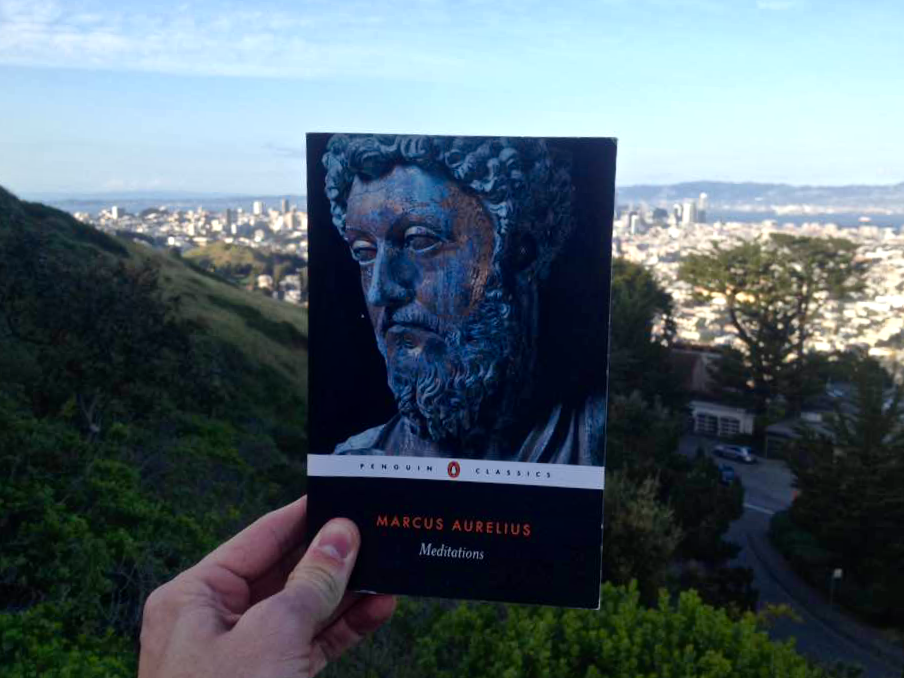"Then for the first time we stood all together in our new home. I drew up the ladder and, with a greater sense of security that I had enjoyed since we landed on the island, offered up our evening prayer and retired for the night."
— Minister Robinson, The Swiss Family Robinson
— Minister Robinson, The Swiss Family Robinson
Lately, I've been striking out with books. I've marooned three in a row, feeling uninvolved with the topics, less moved by the authors' prose, and ultimately unmotivated to finish them let alone recommend them. That's not a good sign. I can count the number of unfinished books on one finger in the past two years. So I returned to basics. And I'm so glad.
Growing up, The Swiss Family Robinson (1812) was one of my favorite adventure stories and the Disney movie (1960) was a chronic Blockbuster rental for years. Prying open the pages of my original copy, nearly twenty years later on the banks of the Pacific in La Jolla, I immediately felt at home alongside the minister, his wife, and four sons, Fritz, Ernest, Francis, and Jack—plus their menagerie of tamed and untamed animal friends. I smiled through the simple adventures of the shipwrecked Robinsons, as they worked to build Falconhurst, a mansion-sized treehouse amidst the jungle of a majestic, deadly island, all the while battling sharks, snakes, and monsoons. In time, with each passing season, the Robinson boys' unique preferences and skillsets blossom and the dangerous unknowns became a beloved home. Of course, with all storybook endings seeds for new adventures are planted, in the Robinsons' case on land and by sea.
I felt like a kid again. What spoke to me in The Swiss Family Robinson then and now was its thrilling adventure at sea, a taming of the wilderness with one's own hands, and a celebration of the strengthening of relationships during the process. I've always wanted a pet monkey too. [JG]
Growing up, The Swiss Family Robinson (1812) was one of my favorite adventure stories and the Disney movie (1960) was a chronic Blockbuster rental for years. Prying open the pages of my original copy, nearly twenty years later on the banks of the Pacific in La Jolla, I immediately felt at home alongside the minister, his wife, and four sons, Fritz, Ernest, Francis, and Jack—plus their menagerie of tamed and untamed animal friends. I smiled through the simple adventures of the shipwrecked Robinsons, as they worked to build Falconhurst, a mansion-sized treehouse amidst the jungle of a majestic, deadly island, all the while battling sharks, snakes, and monsoons. In time, with each passing season, the Robinson boys' unique preferences and skillsets blossom and the dangerous unknowns became a beloved home. Of course, with all storybook endings seeds for new adventures are planted, in the Robinsons' case on land and by sea.
I felt like a kid again. What spoke to me in The Swiss Family Robinson then and now was its thrilling adventure at sea, a taming of the wilderness with one's own hands, and a celebration of the strengthening of relationships during the process. I've always wanted a pet monkey too. [JG]
ABOUT THE AUTHOR(S)
Johann Wyss's classic tale began as a bedtime tale for his own four boys, each of whom were represented in age and characteristics as Fritz, Ernest, Francis, and Jack. This isn't an uncommon origin for children's stories of course. Watership Down (which I love), The Lord of the Rings, Chitty Chitty Bang Bang, and many others began this way. But SFR was unique in that it's had a helping hand from many others over the last 200 years.
Wyss (1743-1818) based his story off Daniel Defoe's Robinson Crusoe. One of Wyss's sons, Johann Rudolf, edited and published his father's bedtime story in 1812. A French version appeared in 1824 in Paris with new adventures added, translated by Mme La Baronne Isabelle de Montolieu. Dozen of English and French versions went to market with new adventures added and old ones dropped or edited for 60 years. In 1889, W.H.G. Kingston's abridged English version became the The Swiss Family Robinson as it is known and sold today. Of course, the Disney version took liberties too, adding pirates and some ostrich olympics.
Upon discovering this sampling and cutting and editing from different writers, editors, and publishers, I'm reminded of Homer's The Odyssey and The Iliad and its refinement from generations of oral tradition. Hip-hop beats from the 21st century come to mind too, sampled thousands of times over. In this sense, The Swiss Family Robinson is still alive and growing two centuries later, much like the island and its inhabitants of its pages.
Wyss (1743-1818) based his story off Daniel Defoe's Robinson Crusoe. One of Wyss's sons, Johann Rudolf, edited and published his father's bedtime story in 1812. A French version appeared in 1824 in Paris with new adventures added, translated by Mme La Baronne Isabelle de Montolieu. Dozen of English and French versions went to market with new adventures added and old ones dropped or edited for 60 years. In 1889, W.H.G. Kingston's abridged English version became the The Swiss Family Robinson as it is known and sold today. Of course, the Disney version took liberties too, adding pirates and some ostrich olympics.
Upon discovering this sampling and cutting and editing from different writers, editors, and publishers, I'm reminded of Homer's The Odyssey and The Iliad and its refinement from generations of oral tradition. Hip-hop beats from the 21st century come to mind too, sampled thousands of times over. In this sense, The Swiss Family Robinson is still alive and growing two centuries later, much like the island and its inhabitants of its pages.
"The leafy shade of this green tree is far more beautiful than any church."
— Minister Robinson, The Swiss Family Robinson
— Minister Robinson, The Swiss Family Robinson
YOU MAY ALSO LIKE

























